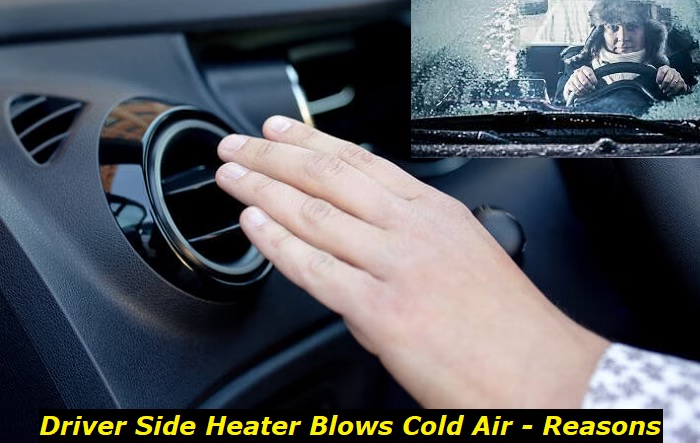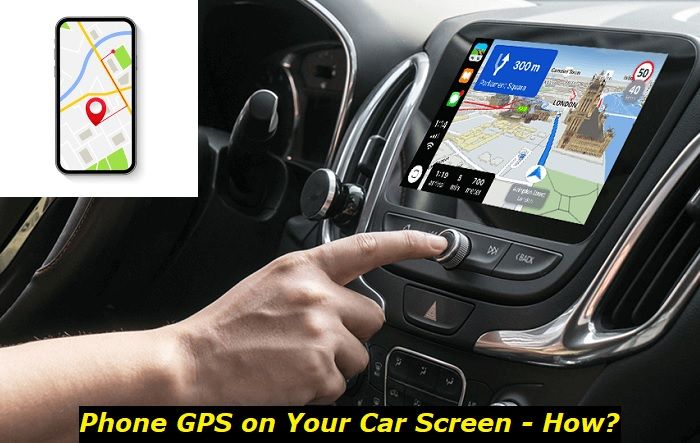During the winter season, one of the most vital parts of your vehicle is your heater. It helps to keep you warm and comfortable as you drive. Drivers living in cold regions heavily rely on their heaters. Therefore, it can be frustrating when you switch on your car's heater then the cold air hits your face instead of warmth.
Automotive manufacturers design our car heaters to produce heat, not cold air. Therefore, there might be an issue with your heater. Several reasons could be causing your heater to emit cold air. It could be due to low coolant levels, a malfunctioning blend door actuator, et cetera. It's crucial to pinpoint and understand the underlying issues to implement the appropriate solutions for your heater. A reason we crafted today's guide.

The guide will examine the typical reasons for a driver's side heater emitting cold air and suggest ways to resolve the issue.
Why the Driver's Side Heater Blows Cold Air
One chilly morning you slide into the driver's seat and turn on the heaters only to feel the cold hitting your face. That's super frustrating. Your AC or heater should not blow cold air on one side and hot air on the other section of your car's cabin. Here are several reasons the driver's side heater might be blowing cold air.
Reason #1: Low Coolant Levels
The heater core in your vehicle is responsible for heating and keeping the cabin warm. It uses the engine's coolant (a mixture of antifreeze and distilled water) to warm your car. As the coolant circulates throughout the engine, it will flow over the heater core to release the warm air it has picked from the engine.
The heater core then blows into the cabin with the help of a blower motor. Therefore, you may experience heating issues when the level of the coolant is low. The heater core may not have enough coolant circulating through it. Hence, it may result in insufficient heating.
Therefore, consider checking your coolant level if the heater blows cold air to the driver's side.
Solution
A leak in the cooling system may lead to low levels of coolant. The low coolant may result in the driver's side heater blowing out cold air instead of warm air, among other issues.
Therefore, check and refill the coolant if it's running out.
Here's how to check and refill the coolant.
- Park your vehicle on flat ground and let the engine cool down.
- Locate the coolant reservoir below the hood. It is a translucent plastic container with a fill line on the side.
- Check the coolant level against the fill line. If it is below the line, refill the coolant.
Refilling the Coolant:
- Open the reservoir cap and pour a mixture of coolant and distilled water. Use a 50/50 ratio when mixing the distilled water and coolant.
- Ensure it reaches the designated fill line.
- Replace the reservoir cap and start the engine.
- Let the engine run to circulate the coolant and warm up the heater.
- Turn the heater to MAX and check if the driver's side is blowing warm air.
You may be dealing with another issue if the heater still blows cold air to the driver's side. You may have to check your thermostat.
Reason #2: Malfunctioning Thermostat
A thermostat is a critical component of the engine's cooling system. It helps regulate the engine's temperature by opening and closing the coolant flow to the radiator. Therefore, a malfunctioning thermostat can prevent coolant from circulating through the engine and heater core, resulting in insufficient heating. The engine might not heat up to the desired temperature. Therefore, your heater may blow cold air into the driver's cabin.
Solution
Check your thermostat. Look for visual signs of damage. In most cases, you may also notice erratic temperature changes, overheating, overcooling, or strange sounds from the radiator. Consider replacing your thermostat if it's failing.
Replacing a Malfunctioning Thermostat
Here's how to fix a malfunctioning thermostat.
- Locate the thermostat housing.
- Remove the clamp and disconnect the upper radiator hose from the thermostat housing.
- Remove the thermostat housing by unscrewing the bolts or nuts that hold it.
- Remove the old thermostat and gasket. Be careful while doing it. You'll need an intact gasket housing when installing a new thermostat.
- Install the new thermostat and gasket. Make sure the thermostat is oriented correctly.
- Reinstall the thermostat housing and tighten the bolts or nuts according to the specifications provided by the manufacturer.
- Reinstall the upper radiator hose to the thermostat housing and securely fasten the clamp.
Turn on the heater to max and check if the heater emits heat to both sides of the cabin.
Reason #3: Broken Heater Core
The heater core is a small radiator-like component found on the dashboard. It circulates the hot coolant from the engine through the heater core, which heats the air. The hot air will then blow into the cabin of your car.
A broken heater core will not circulate the hot coolant through the system. Therefore, hot air may fail to blow to one or all sides of the cabin.
You may also notice the following symptoms if you have a broken heater core.
- Low coolant levels - A clogged or broken heater core may cause a leak in the coolant system. The leaks will result in low coolant levels.
- Sweet smell - Coolant leakage into the heater core often produces a sweet smell. Therefore, a sweet-smelling cabin may be an indication that there is something wrong with your heater core.
- Foggy windows
Solution
You will have to fix the broken heating core. Here's how to do that.
- Ensure that the engine cools down.
- Locate the heater core. Its location may vary depending on the model of your vehicle.
- Drain the coolant from the radiator and heater core. It is necessary to remove the radiator cap and open the drain valve. Additionally, you'll have to detach the hoses connecting the heater core to the engine.
- Remove the dashboard and any other components that may block access to the heater core.
- Once you have access to the heater core, remove it from the car.
- Put in the new heater core.
- Reconnect the heater core hoses to the engine block and refill the radiator with coolant.
- Start the vehicle and allow it to run for a few minutes with the heater. Check if the heater works as expected.
Reason #4: Blocked Heater Core
Over time, debris or dirt may clog or block the heater core preventing the hot engine coolant from flowing through it. Hence, causing the heater to discharge cold air. Therefore, you will notice insufficient warmth in the cabin or cold air blowing into one section of the car.
Solution
You'll need to unblock the heater core. However, you'll need to identify a blockage in the heater core. Start by inspecting the hoses linked to the heating core. There is a high chance you have an obstructed heater core if those hoses feel cold.
Here's how to fix a blocked heater core.
- Locate the heater core in your vehicle. Check the owner's manual because the location may vary depending on your car model and make.
- Disconnect the hoses from the heater core and drain any coolant from the system.
- Use a garden hose to flush out the heater core. Direct the water flow in the opposite direction of normal coolant flow.
- If the flushing doesn't clear the blockage, use a chemical cleaner designed to clean heater cores.
- Reconnect the hoses to the heater core and refill the cooling system with fresh coolant.
- Start the engine and allow it to warm up while monitoring the temperature gauge and heater output.
Consult a professional mechanic or HVAC technician for assistance if the issue persists.
Reason #5: Faulty Blend Door Actuator
The HVAC system of a vehicle relies on the blend door actuator to regulate the passage of either cold or hot air. Therefore, your heat may blow cold air to the driver's side if the blend door actuator is faulty. It will lead to an improper hot air flow regulation to one section of your car's cabin. As a result, the section's heater may blow only cold or warm air, while the other part may continue to function correctly.
Solution
Fix a faulty blend door actuator under the dashboard on the driver's side as follows.
- Remove any screws or bolts holding the actuator in place.
- Disconnect the electrical connectors.
- Install the new blend door actuator and connect the electrical connectors. Be sure to test the new actuator by turning on the heater and checking that it blows warm air from the driver's side vents.
Wrapping up
Both the passenger and the driver's cabin need warmth during the winter months. Therefore, you'll need to pinpoint why the cold air is blowing into the driver's side from the heater. Your solution to the heater problem may be a coolant refill, part replacement, or cleaning of some parts of the heating system.
Luckily, you can determine the most appropriate fix for your situation by identifying the root cause. Solutions like refilling the cool are simple DIY tasks. However, some of the heater repairs may require the help of a professional mechanic.
About the authors
The CarAraC research team is composed of seasoned auto mechanics and automotive industry professionals, including individuals with advanced degrees and certifications in their field. Our team members boast prestigious credentials, reflecting their extensive knowledge and skills. These qualifications include: IMI: Institute of the Motor Industry, ASE-Certified Master Automobile Technicians; Coventry University, Graduate of MA in Automotive Journalism; Politecnico di Torino, Italy, MS Automotive Engineering; Ss. Cyril and Methodius University in Skopje, Mechanical University in Skopje; TOC Automotive College; DHA Suffa University, Department of Mechanical Engineering






Add comment